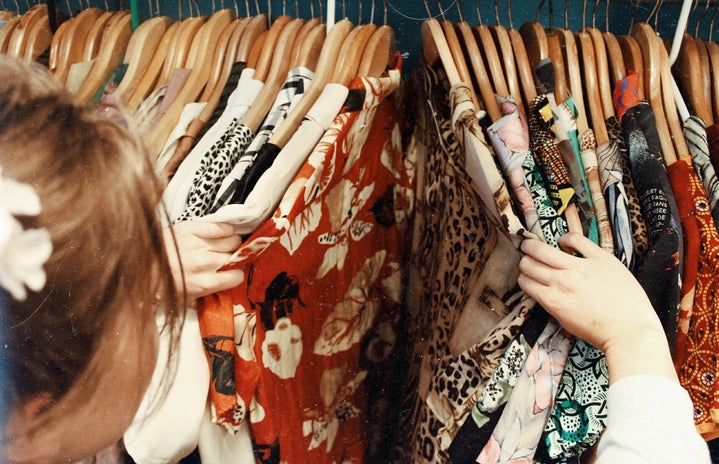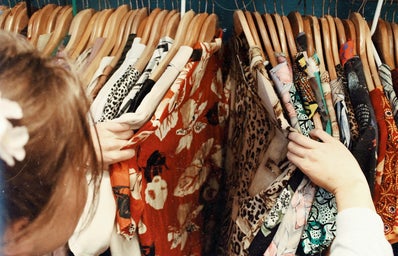At this point I have mentioned in a few of my articles that over the course of this year I have pursued the skill, and art of garment construction. Back in late March, the first clothing item I sewed was a pair of wide-legged pants. The process and the response were enough to motivate me to continue with this hobby. Since then I have made dresses, shirts, skirts and even a jacket. I quickly realized that once you have mastered a few skills it is easier to take on projects that were seemingly impossible. I must warn you that if you decide to take on this hobby please be patient with yourself. Not only does it generally take hours to construct a garment, but it takes time to familiarize yourself with your sewing machine, drafting the patterns and then the actual sewing process is also time consuming. However, at the end, it is so satisfying to try on that final product and look fabulous in something you have created with your own hands. Here is a mini guide as to how you may start sewing if you are interested.
- The sewing machine
-
Now you do not need any fancy machine to start off. As a beginner all you need is a basic straight-stitch and a zig-zag stich. I currently use the Singer 1507, which I believe is the simplest machine out there. If you don’t have the means to buy a new machine, I would recommend you buy one second hand or ask family members if they have one you could use. Gumtree and Facebook Market also tend to have options available for way cheaper than the retail prices. Alternatively, if you cannot get your hands on a sewing machine you may want to consider hand sewing. Now I do not have the patience for that, but I have come across some beautiful projects that were completed via hand sewing only. Here is a TikTok that takes you through the basics of hand sewing.
- Fabric
-
The kind of fabric you decide to work with depends on what you aim to make, and your skill level. The first few projects I started with included linen. It is a versatile, easy fabric to work with however the only issue is that it frays a lot! I find that sturdy cottons or cotton-poly blends are also great to work with as a beginner. If you want more of a challenge, I suggest satin or perhaps even velvet. If you do not have an overlocker, I would avoid tweed or boucle as the fraying is too much to handle and your garment will not last.
- Must-have sewing supplies
-
It is so easy to feel overwhelmed when you are at the fabric store looking at all the haberdashery, so here are some supplies I would recommend investing in:
– A seam ripper.
– Sewing pins
– A measuring tape
– A 50cm ruler
– Some extra bobbins for all your different coloured thread.
– Some pattern paper – you can just use brown wrapping paper or newspaper
– A set of hand needles
– Some fabric chalk or fabric markers
– A pair of fabric scissors
– If your machine doesn’t come with extra needles, invest in some. The worst is breaking a needle while in the middle of a project.
You also need to think of zippers, buttons or elastic that your garment might require for completion.
- Sewing patterns
-
To date I have never invested in a sewing pattern for two reasons: I do not like spending money when it is not necessary, and I have yet to find a pattern set I would like to purchase in store. I have however, found that there is a tonne of small businesses online who sell their patterns as a PFD at relatively affordable prices. I usually draft my own patterns via tutorials on YouTube or by tracing my own clothes as a reference. Pattern drafting is an incredibly time-consuming process and requires you to be exact and precise. This is the single most important step in the sewing process as it will determine what the end product will look like. Therefore, if you do decide to draft your own patterns, I suggest you create a mock version with some cheaper fabric. That way you can check if you need to make any alterations on the original pattern and you do not end up wasting your beautiful fabric. Kim Dave is an incredible YouTuber who has pattern tutorials for quite possibly anything you can think of. The great thing about drafting your patterns is that you can use them for all your future projects, instead of resketching with every new project. Basically, you end up saving time. If you do not want to draft your own patterns I recently found this website called Mood Fabrics and they have an insane amount of FREE sewing patterns for some really complex and beautiful designs. I have yet to test them out, but I was honestly shook. They have a variety of styles for shirts, pants, dresses and much more. You are bound to find something that resonates with you.
- YouTube tutorials
-
The fact that YouTube is free is the most incredible thing ever. Everything I currently know I learned from content creators on YouTube who were willing to share their ideas and skills on the platform. There are some creators who focus on thrift flipping, others sew from scratch, however I find that most creators do a combination of both. Here are some I suggest you check out:
– Kim Dave
– Coolirpa
As I mentioned in a previous article, more and more people are emerging themselves in skills that were previously viewed as traditional. It is great to see more people explore their creative sides. It is also a bit of a flex telling people you made the clothes you are wearing. I am so proud of every single item I’ve made, and I hope this article was somewhat helpful in getting started with sewing if it is a skill you wish to pursue.


